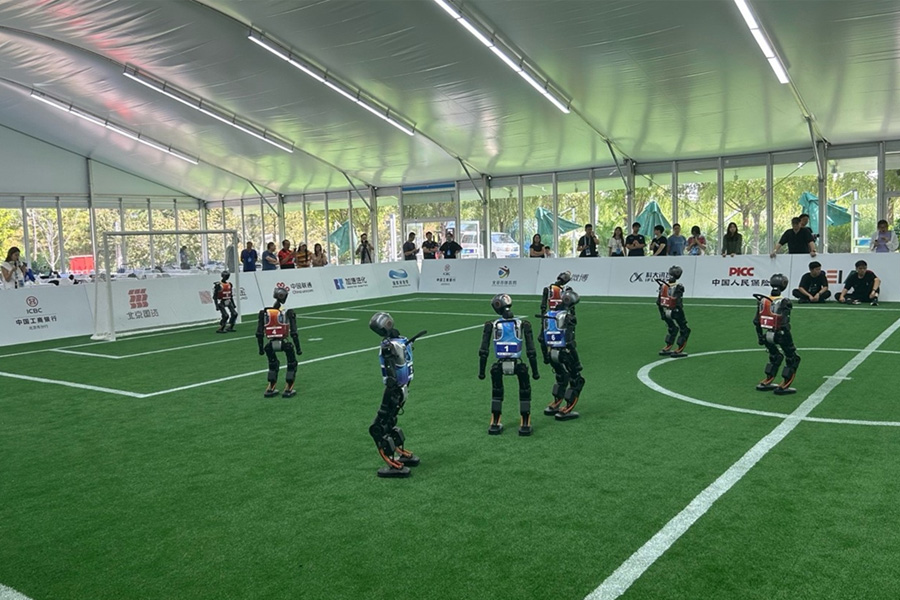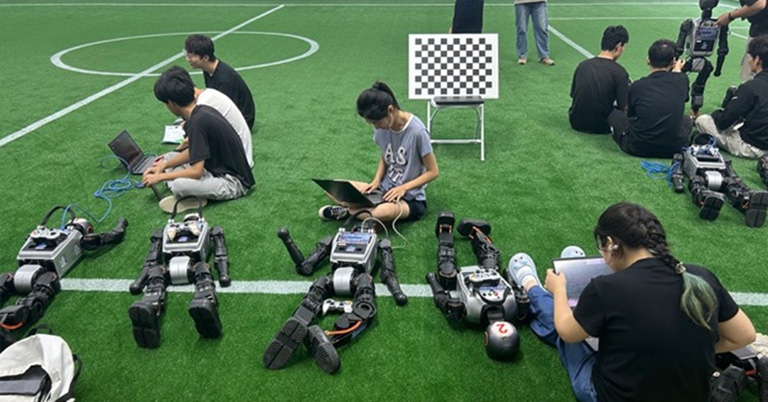No headings found
Watching Blade Runner when I was a teenager gave me a massive existential shock, thinking what if a future that is independent of human beings, yet a form of metabolism in an endless self-growing like an 'automatic subject' that changes forms of nature. And today, the robotic news reminded me exactly of this — but instead of replicants questioning their mortality, we have 280 teams of humanoid robots kicking balls around Beijing's National Speed Skating Oval. Recently, something quietly bizzare happened. The World Humanoid Robot Games hosted its first fully autonomous 5v5 soccer preliminaries, and honestly, I'm not sure we're prepared for what this actually means.
Humanoid Robot Games 5v5 Soccer Overview
The Spectacle of Silicon Athletes

Here's what went down: 500+ robots from 16 countries gathered at the Ice Ribbon venue for 26 different disciplines spanning 538 events over three days. But the soccer match is what caught my attention — not because robots playing football is particularly new, but because of how seamlessly autonomous they've become.
These weren't remote-controlled toys. Each team had two forwards, two defenders, and one goalkeeper operating entirely on their own algorithms. They positioned themselves, tackled, passed, and shot goals while recovering from collisions — all without human intervention during the 40-minute matches.
The technical setup was fascinating in its simplicity. Booster Robotics provided the hardware (open-source, naturally), while teams developed their own software for motion control, visual recognition, and coordination. It's was exactly like giving everyone the same body but letting them program different minds.
The Metabolism of Machines
What struck me wasn't the robots' capabilities — we've seen impressive AI demos before. It was the mundane efficiency of it all. Yang Shaoshuai from China Agricultural University mentioned that 5v5 requires "constant coordination rather than relying on a single leader." The robots had learned teamwork. But the rules had to be adapted for robots — fewer penalties for physical contact, 10-second protection periods after free kicks
I think we are surely witnessing machines developing collaborative behaviors that mirror biological systems. Chief Referee Dong Hao noted these skills transfer to "industrial and life scenarios" — navigation, obstacle avoidance, intelligent decision-making in homes.
Zhao Weichen from Booster Robotics was even more direct about their vision: making humanoid robots "as simple, reliable, and practical as computers." The company's been working on bipedal robots for two decades, using reinforcement learning, large-scale simulation, and real-world training to create what they call "end-to-end autonomous perception."
Techno-Possibilism and Its Discontents
The organizers framed this as sports, but really we're watching the beta test for a post-human workforce. More often than not, technological breakthroughs get presented as inevitable progress, but there's something unsettling about the casual efficiency on display here.
One thing that caught my attention was how the event treated automation as entertainment. I wonder if we've turned the displacement of human capability into a spectator sport, complete with international competition and national teams. It's rather funny that our response to potentially job-displacing technology is to make it compete for our amusement.
Article Last updated: August 14, 2025






